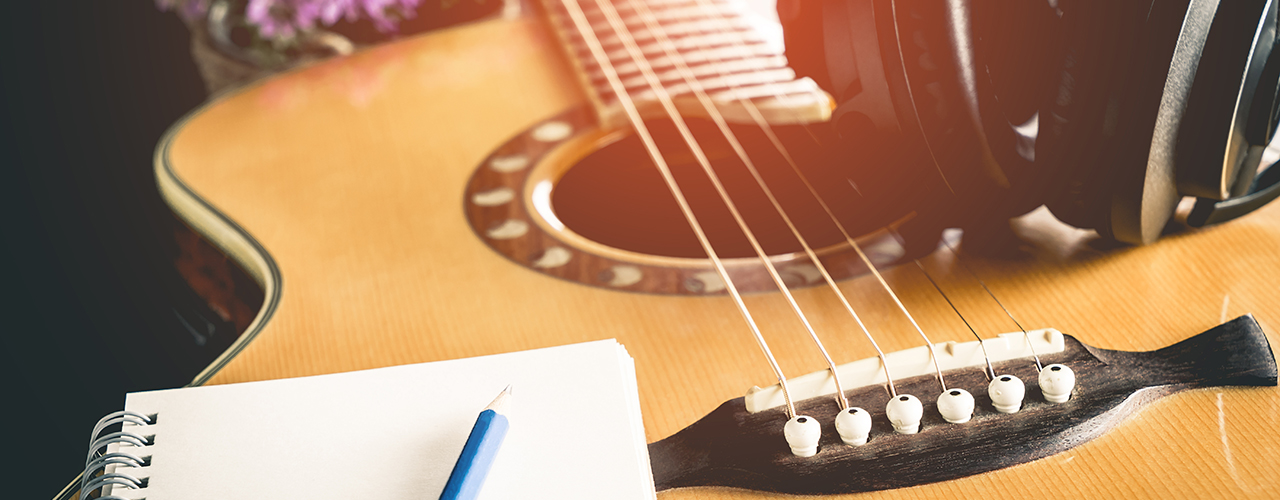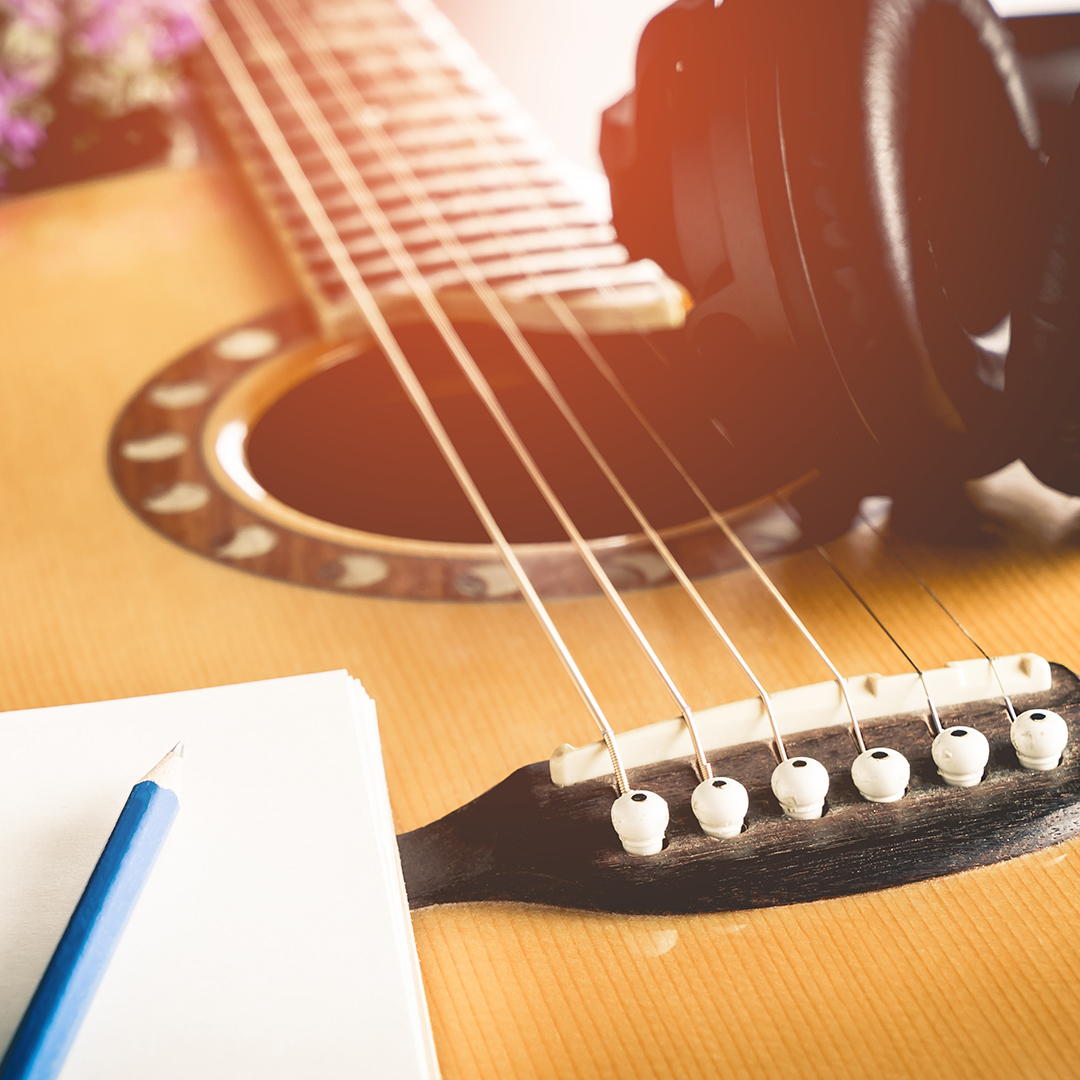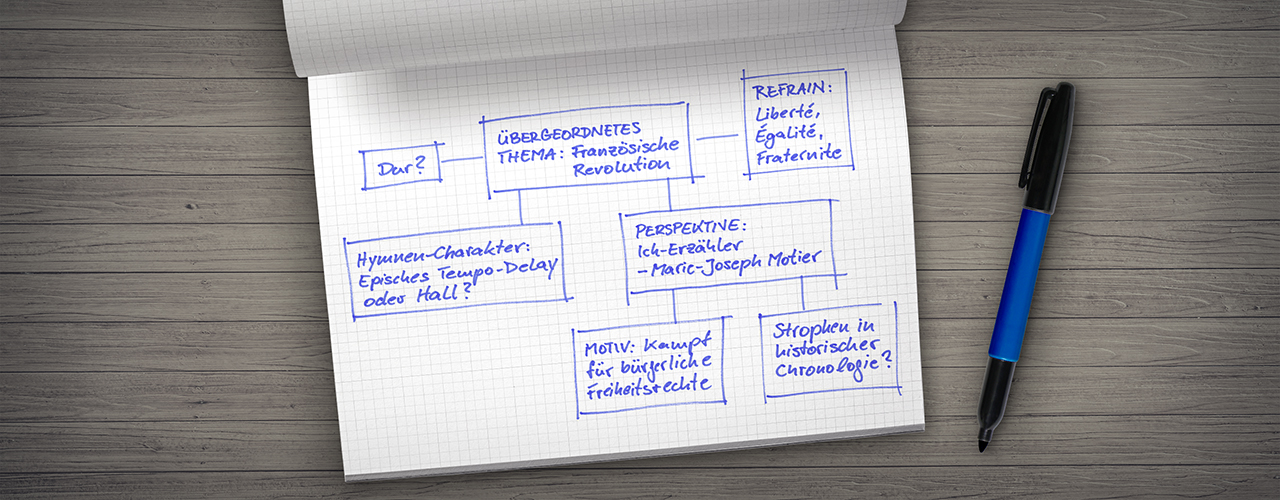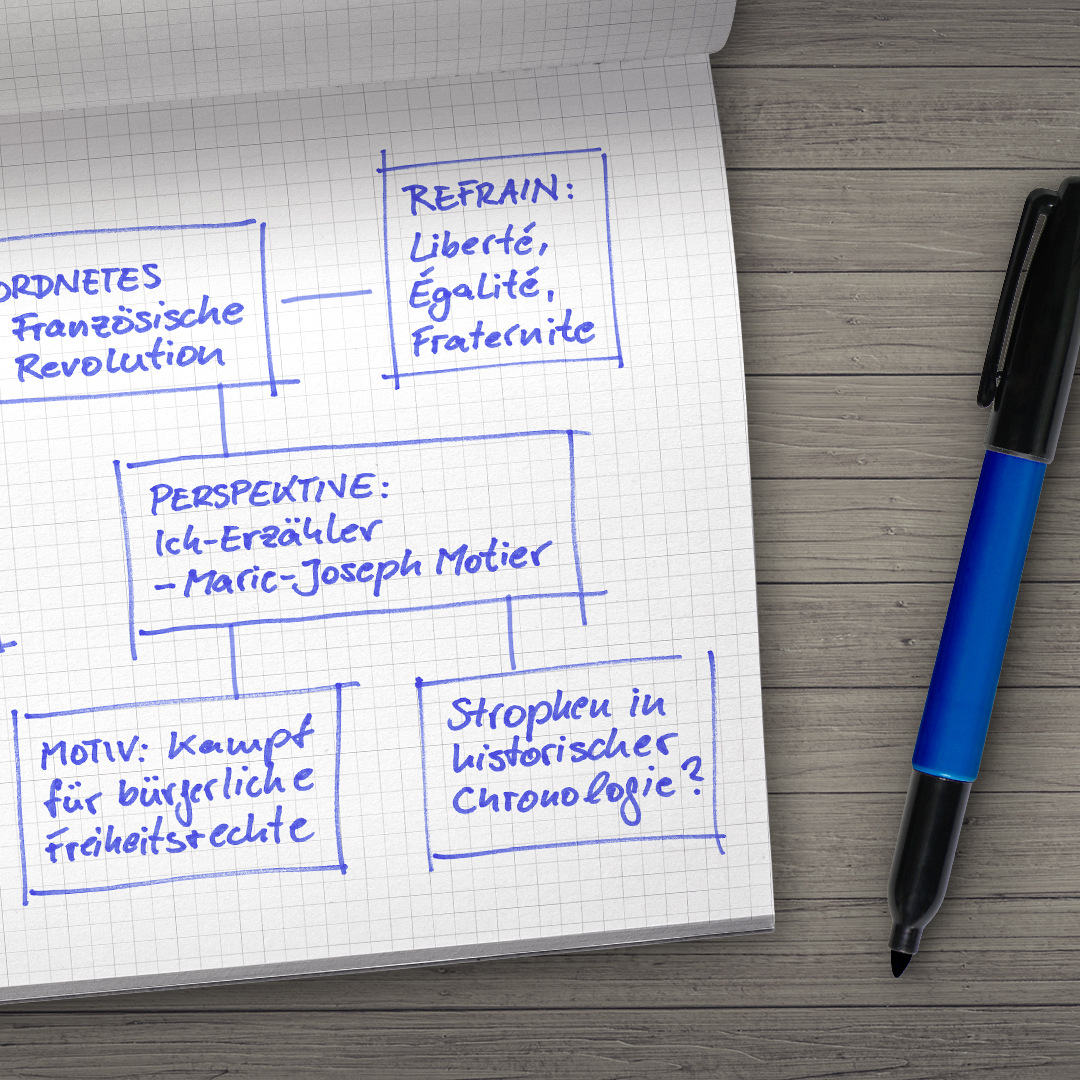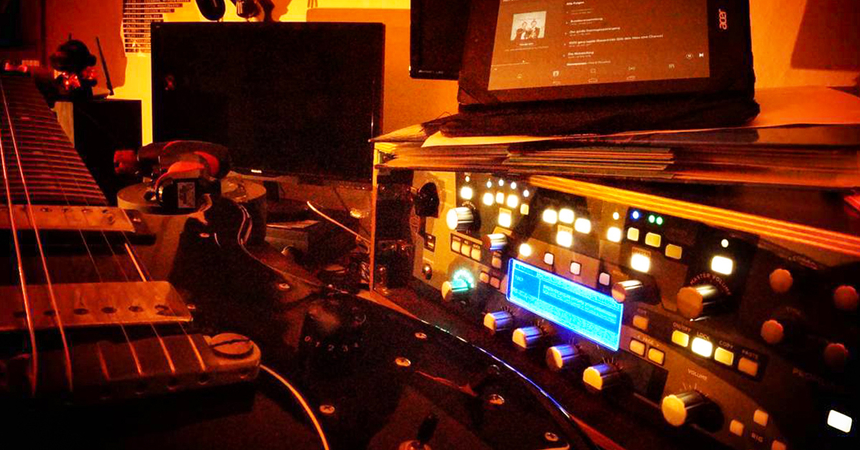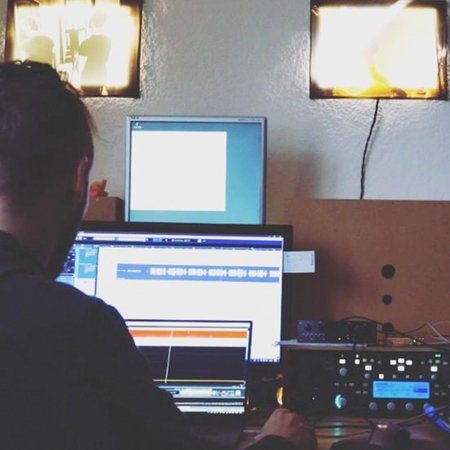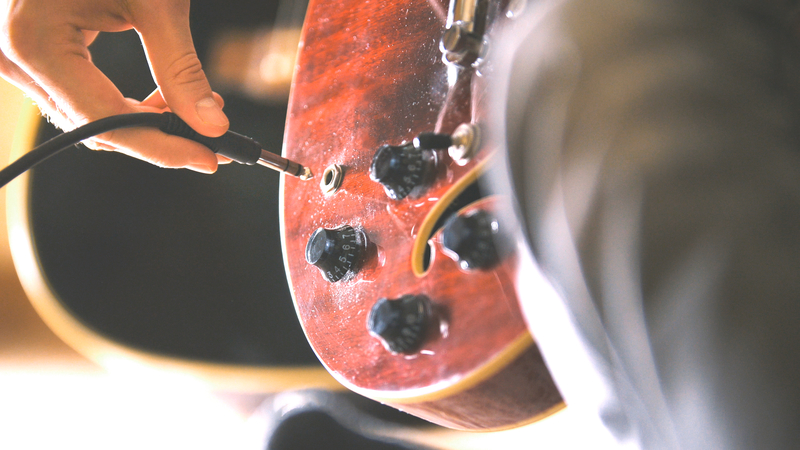If you are now afraid you will have to paint or draw, take a deep breath. By mapping, we mean different kinds of mind maps. But for songwriting? Perhaps the German term 'Gedankenlandkarte' (map of thoughts) is more descriptive. Your main idea for the song is in the centre. Then associations to the main idea branch out into individual streets. This can bring forth lines or whole verses. Or it can simply help you sort out your creative thoughts. Sometimes you just have to rid your mind of some ballast and creativity slips in.
